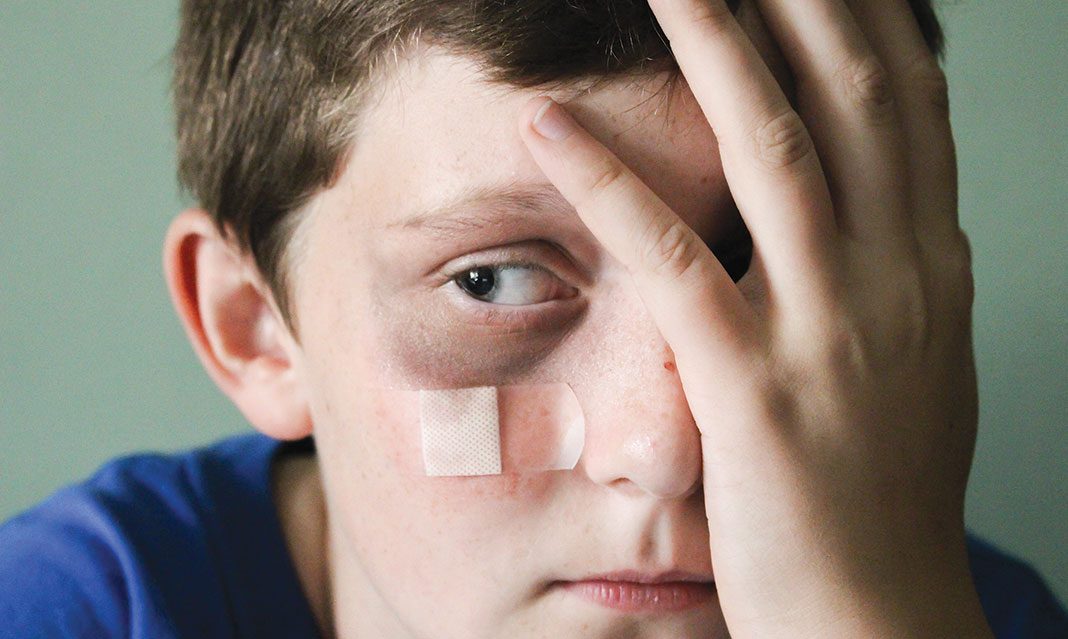In the background paper published in November 2006 for the International Policy Forum on Family Violence, Dr. Christine Walsh, from the University of Calgary, describes how individuals often resist reporting cases of child abuse and neglect to a local Children’s Aid Society in fear of causing detriment to the effected family. In fact, the most common misconception that impedes witnesses from contacting Children’s Aid is the belief that one call to the society about a child’s safety will lead to the separation of the victimized youth from their parents, guardians, or family members.
Christina Campbell, the advocacy and public engagement specialist at the OACAS, reveals that in 97% of their investigations, children remain with their families, and that instead of splitting a family apart, Children’s Aid works closely with parents to provide support and counselling.
Every October, the OACAS organizes a provincial child abuse prevention month-long campaign to raise awareness about the existence of child abuse and neglect in Ontario, and to emphasize the integral role that Children’s Aid plays in preventing this abuse. Through this campaign, the OACAS hopes to address the myths surrounding Children’s Aid and educate the community on the services Children’s Aid provides, including support during crises and parenting challenges, along with programs for managing substance abuse.
“I think a lot of people don’t realize that there is actually a legal duty to report [instances of child abuse],” explains Campbell in an interview with The Medium. “It is part of our child and youth family act, section 72, and it applies to everyone, not just professionals who work with kids. First thing we want is for people to be empathetic and to understand how they can help. I think the moral responsibility is important to focus on, but there is also a legal obligation.”
While close friends and extended family may dread the repercussions of calling Children’s Aid, Campbell notes that in some cases, people also fail to report child abuse because they do not recognize the signs and symptoms of neglect and mistreatment. Abuse manifests in several forms and Campbell admits that it is not always easy for an outsider to immediately identify a situation of concern.
According to the OACAS official website, they distinguish four different categories of child abuse: physical abuse, emotional abuse, sexual abuse, and neglect. They define physical abuse as any physical action by a parent or caregiver that could inflict physical harm or injury to a child.
Friends, family members, teachers, and police must recognize certain signs of physical abuse including, but not limited to, children wearing long sleeves and pants in warm weather, aggressiveness, and the re-enactment of abuse on toys. Emotional abuse targets a child’s self-esteem, self-worth, and emotional development, and signals may include non-medically related headaches, speech disorders, and intense nightmares. Sexual abuse is defined as using a child for “sexual gratification of an adult or an older child.” Children suffering from sexual abuse may exhibit urinary infections, bedwetting, and a fear of the dark.
Campbell explains that this year, the campaign focuses on bringing attention to the impacts of neglect. Recent research in Ontario shows that Children’s Aid assists approximately 90% of their total associated families with neglect issues. The OACAS defines neglect as a type of abuse that occurs when “a child’s caregiver fails to provide basic needs such as food, sleep, safety, supervision, appropriate clothing, or medical treatment.”
“Child abuse and neglect can really impact a child’s life. It can inhibit their ability to strive and flourish in life, and in the worst-case scenario, it can lead to their death,” Campbell says. “Neglect is a form of abuse that we take equally seriously.”
Campbell explains that the campaign aims to further create resources for teachers to help their students, so they understand the types and subtle symptoms of abuse. In the classroom, teachers should encourage their students to seek help from a trusted adult and to speak up when they feel uncomfortable or in danger.
Despite the prevalent myth about the consequences of calling Children’s Aid to report a case of child, or youth abuse, and exploitation, Campbell reveals that they get approximately 165,000 calls per year from the public. This month’s campaign hopes to dispel the notion that seeking help will cause greater harm for a family, and instead emphasize the importance of contacting Children’s Aid for protection and support.
Local Children’s Aid Societies have welfare specialists ready to receive calls 24-hours-a-day, 7-days-a-week.



